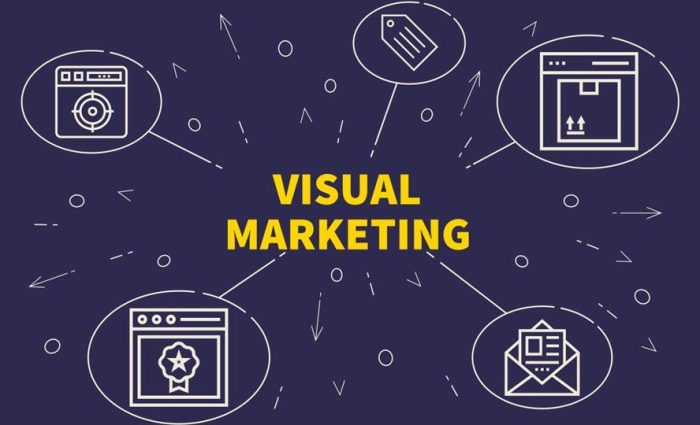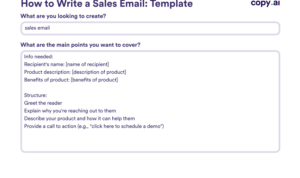Developing Visual Marketing Strategies dives into the world of captivating visuals and strategic branding, offering insights on how to create a strong visual presence in today’s digital landscape. From understanding the importance of visual content to exploring the elements of an effective strategy, this guide is your go-to resource for elevating your marketing game.
Understanding Visual Marketing: Developing Visual Marketing Strategies
Visual marketing is the use of images, videos, and other visual elements to promote products or services. In today’s digital world, where attention spans are short and competition is fierce, visual marketing plays a crucial role in capturing the audience’s interest and conveying messages effectively.
Visual content has a significant impact on consumer behavior and decision-making. Studies have shown that people are more likely to engage with and remember visual content compared to text-only content. Visuals can evoke emotions, create a connection with the audience, and influence purchase decisions.
Moreover, visual elements can enhance brand recognition and storytelling. By using consistent color schemes, logos, and design elements, companies can create a cohesive brand identity that resonates with their target audience. Visual storytelling, through images and videos, can also help convey the brand’s values, mission, and unique selling points effectively.
The Power of Visual Storytelling
Visual storytelling is a powerful tool in marketing that allows brands to communicate their message in a compelling and memorable way. Through images, videos, and graphics, brands can create narratives that resonate with their audience, evoke emotions, and drive engagement. By telling a story visually, brands can humanize their message and connect with consumers on a deeper level.
- Visual storytelling creates a more immersive experience for the audience, making the brand message more memorable and impactful.
- By using visuals to tell a story, brands can showcase their products or services in action, demonstrating their benefits and value proposition effectively.
- Visual storytelling can help differentiate a brand from its competitors by creating a unique and authentic narrative that sets it apart in the market.
Elements of Visual Marketing Strategies

Visual marketing strategies encompass various key components that play a crucial role in creating a compelling brand presence and engaging target audiences. From color schemes to multimedia content, each element contributes to the overall effectiveness of the strategy.
Role of Color, Typography, and Imagery
Color, typography, and imagery are fundamental elements in visual branding that help convey the brand’s personality, message, and values.
- Color: The choice of colors in visual marketing can evoke specific emotions and associations, influencing how consumers perceive a brand. For example, warm colors like red and orange may convey energy and excitement, while cool colors like blue and green can evoke calmness and trust.
- Typography: The selection of fonts and typography styles can impact readability, brand identity, and visual appeal. Different font styles can convey different tones and messages, so it’s essential to choose typography that aligns with the brand’s overall aesthetic and messaging.
- Imagery: The use of visuals such as photos, illustrations, and graphics can enhance storytelling, create a memorable brand image, and capture the audience’s attention. High-quality imagery that resonates with the target audience can help establish a strong visual identity and differentiate the brand from competitors.
Multimedia Content in Visual Marketing
Incorporating multimedia content like videos, infographics, and GIFs in visual marketing strategies can enhance engagement and storytelling, making the brand more dynamic and interactive.
- Videos: Video content is highly engaging and can effectively communicate complex messages in a visually compelling way. Brands can use videos to showcase products, share customer testimonials, or tell a brand story, creating a more immersive and memorable experience for viewers.
- Infographics: Infographics are visually appealing tools that combine text and graphics to present information in a concise and easy-to-understand format. They are ideal for conveying data, statistics, or processes in a visually engaging manner, making complex information more digestible for audiences.
- GIFs: GIFs are short, looped animations that can add a touch of humor, emotion, or creativity to visual content. Brands can use GIFs to create eye-catching social media posts, showcase product features, or communicate brand personality in a fun and engaging way.
Target Audience and Visual Appeal
When it comes to visual marketing strategies, understanding your target audience is crucial. Identifying their preferences for visual content can help you create designs that resonate with them and capture their attention effectively.
Identifying Target Audience Preferences, Developing Visual Marketing Strategies
To identify target audience preferences for visual content, you can conduct market research, analyze demographics, psychographics, and behavior patterns. By studying your audience’s interests, values, and lifestyles, you can tailor your visual marketing strategies to appeal to them effectively.
Significance of Creating Visually Appealing Designs
Creating visually appealing designs is essential to capture audience attention in a crowded digital landscape. Eye-catching visuals can help your brand stand out, communicate your message effectively, and evoke emotions that resonate with your target audience.
Examples of Successful Visual Marketing Campaigns
– Coca-Cola’s “Share a Coke” campaign personalized their iconic bottles with popular names, resonating with a younger demographic and increasing engagement.
– Nike’s “Just Do It” campaign featuring empowering visuals and storytelling inspired athletes of all levels, connecting with their target audience emotionally.
– Apple’s minimalist and sleek product design combined with visually stunning marketing materials appealed to tech-savvy consumers, setting them apart in the competitive market.
Platforms for Visual Marketing
Visual marketing on social media platforms plays a crucial role in reaching and engaging with target audiences. Each platform offers unique features and benefits for showcasing visual content effectively. Let’s compare and contrast different social media platforms for visual marketing, discuss best practices for utilizing visual content on platforms like Instagram, Pinterest, and TikTok, and explore the role of website design and visual storytelling in digital marketing strategies.
Instagram is a highly visual platform known for its focus on images and videos. Best practices for visual marketing on Instagram include:
- Utilize high-quality images and videos to capture audience attention.
- Use Instagram Stories and Reels to create engaging, interactive content.
- Utilize hashtags and geotags to increase discoverability.
- Collaborate with influencers and brand ambassadors to expand reach.
Pinterest is a platform that revolves around visual discovery and inspiration. Best practices for visual marketing on Pinterest include:
- Create visually appealing pins with clear, concise descriptions.
- Organize boards by themes or categories to make content easily searchable.
- Utilize Pinterest Analytics to track performance and optimize strategies.
- Engage with the community by repinning and sharing content from other users.
TikTok
TikTok is a video-focused platform popular among a younger demographic. Best practices for visual marketing on TikTok include:
- Create short, engaging videos that showcase products or services creatively.
- Utilize trending challenges and hashtags to increase visibility.
- Collaborate with TikTok influencers to reach a wider audience.
- Engage with users through comments, duets, and stitches to build a community.
Website Design and Visual Storytelling
Website design plays a crucial role in creating a visually appealing and user-friendly experience for visitors. Best practices for incorporating visual storytelling in digital marketing strategies include:
- Use high-quality images and videos to enhance the overall look and feel of the website.
- Create a cohesive visual identity that aligns with brand messaging and values.
- Utilize storytelling techniques through visuals to evoke emotions and connect with the audience.
- Optimize website speed and mobile responsiveness to ensure a seamless browsing experience.
Creating Engaging Visual Content

To create engaging visual content that aligns with brand messaging, it is crucial to focus on quality, relevance, and creativity. High-quality visuals can capture the audience’s attention and leave a lasting impression. Consistency in visual branding across different marketing channels helps build brand recognition and trust among consumers. Leveraging user-generated content can add authenticity to your brand and increase engagement. Interactive visuals such as polls, quizzes, and interactive videos can create a more immersive experience for your audience.
Tips for Creating High-Quality Visual Content
- Ensure your visuals are high-resolution and visually appealing.
- Stay true to your brand’s color palette and design elements.
- Create a cohesive visual style that reflects your brand’s personality.
- Use storytelling techniques to make your visuals more engaging and memorable.
- Include a strong call-to-action to encourage audience interaction.
Importance of Consistency in Visual Branding
Consistency in visual branding helps establish brand identity and recognition among consumers. When your visuals are consistent across different marketing channels, it reinforces your brand message and values, making it easier for your audience to connect with your brand.
Leveraging User-Generated Content and Interactive Visuals
Utilizing user-generated content can help build a sense of community around your brand and increase audience engagement. Encourage your audience to share their own content related to your brand, products, or services. Interactive visuals such as polls, quizzes, and interactive videos can provide a more personalized and interactive experience for your audience, leading to increased engagement and brand loyalty.





